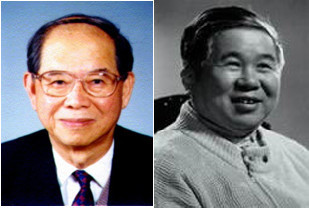Cars made by Chinese company JAC Motors are on display at a dealership in Rio de Janeiro. The low cost of Chinese cars is winning over buyers in Latin America.
Reporting from Lima, Peru, and Bogota, Colombia
At first, Lima taxi driver Mario Segura was disgusted by the thought of buying a Chinese-made car. He had doubts about the vehicles' durability, service and resale value.
But favorable word of mouth, assurances that spare parts are plentiful and, of course, unbelievably low prices won him over.
"Little by little, I heard favorable comments," said Segura, speaking in a Chery showroom in the Surquillo district. He had just plunked down $12,000 in cash for a new Fullwin XR sedan, half the cost, he said, of a comparable Fiat or Renault. "It took a long time to decide, but I'm risking it."
So is Luis Luna, a doctor just back in Lima after working for several years in Argentina. He had planned on buying a secondhand Japanese car. Until, that is, he noticed billboards touting low-priced Chinese brands and listened as his relatives insisted that he kick tires at a JAC dealership, one of dozens of Chinese brands sold here.
"We realized for the same money that we'd pay for a crummy secondhand car that inspired no confidence, we could have a brand-new Chinese car with a two-year warranty," Luna said as he finished paperwork on his new $16,000 JAC B-Cross family wagon. "I'm totally convinced this is the right decision."
Similar buyer testimonials can be heard across Latin America these days, where Chinese cars with unfamiliar brand names like Great Wall, JAC, Brilliance and Sinotruk are selling like hot cakes. Chinese cars were introduced in Peru in 2006 and now one in six new cars sold here is a Chinese make.
There are no fewer than 90 Chinese car manufacturers to choose from, according to the trade group Automobile Assn. of Peru. The Chinese auto industry has yet to undergo the winnowing process that, over a century of competition, has reduced the U.S. car industry to three big players.
The Chinese brands' main selling point is, of course, price: New Chinese cars typically sell for half to two-thirds the cost of a comparable European, U.S. or Japanese vehicle, said Guido Vildozo, an auto industry expert with consultants IHS Automotive in Lexington, Mass.
"What makes Chinese cars so much cheaper? Start with labor," Vildozo said, noting that a typical Chinese autoworker makes $300 to $400 a month, a fraction of the $2,000 to $3,000 in wages that Mexican workers make or the $5,000 to $7,000 a month that U.S. auto workers average.
Another price advantage, said Jian Sun, a partner with AT Kearney business consultants in Shanghai, stems from the "reverse engineering," or design and mechanical imitation, that many Chinese carmakers use in competing models to save them the expense of designing new models from scratch.
Chinese manufacturers are entering the market as Latin American incomes are rising to unprecedented levels, flush from the decade-long global commodities boom filtering down to an expanding consumer class.
Augusto de la Torre, chief Latin America economist at the World Bank, said the region's middle class now encompasses 30% of its population of 570 million, up from 20% in 2002.
In Colombia, where the economy is thriving on global sales of its oil, coal, coffee and bananas, the increase in disposable income is especially dramatic. Bank of Bogota economist Camilo Perez said economic output per capita has nearly doubled in five years, to $6,700 last year from the $3,400 average in 2006.
So it comes as no surprise that car sales are accelerating. New units sold last year in Colombia totaled 325,000, a 28% increase from 2010. New car sales in Peru totaled more than 100,000 last year, up 26% from the previous year.
According to Scotiabank, Brazil's car sales will grow to 2.8 million in 2012, up 4% from last year, but in a much larger population base than those of its neighbors.
The expanding new-car market is what attracted Chinese automakers, who see Latin America as a proving ground for its plan to conquer the world car market in coming decades. According to AT Kearney, China exported 800,000 cars last year but hopes to boost that number to 2 million by 2015 and to 3 million by 2020.
The Latin focus is also explained, AT Kearney's Jian said, by the fact that Chinese manufacturers are not yet prepared to tackle the U.S. and European markets, which are more demanding in quality and emissions standards. The competition is less intense and the regulatory restrictions are lower in emerging markets, he said. China and these regions share similar road conditions, emission controls and safety standards.
(The domestic Chinese car market, where sales last year totaled about 18 million vehicles, is the largest in the world, far surpassing that of the U.S., where about 12.8 million new cars and trucks were sold in 2011.)
Many buyers, like Antonio Benevides, a 26-year-old theme park worker in Bogota, are first-time owners. In early December, he bought a new Chery QQ model for $9,000, two-thirds the cost of a comparable Renault he had considered.
"That difference in price is what put a new car within my reach for the first time," Benevides said as he drove his car off the dealership lot near Bogota's international airport. "I've heard they hold together well, that they are cheap to operate and, as you can see, they are not bad looking."




